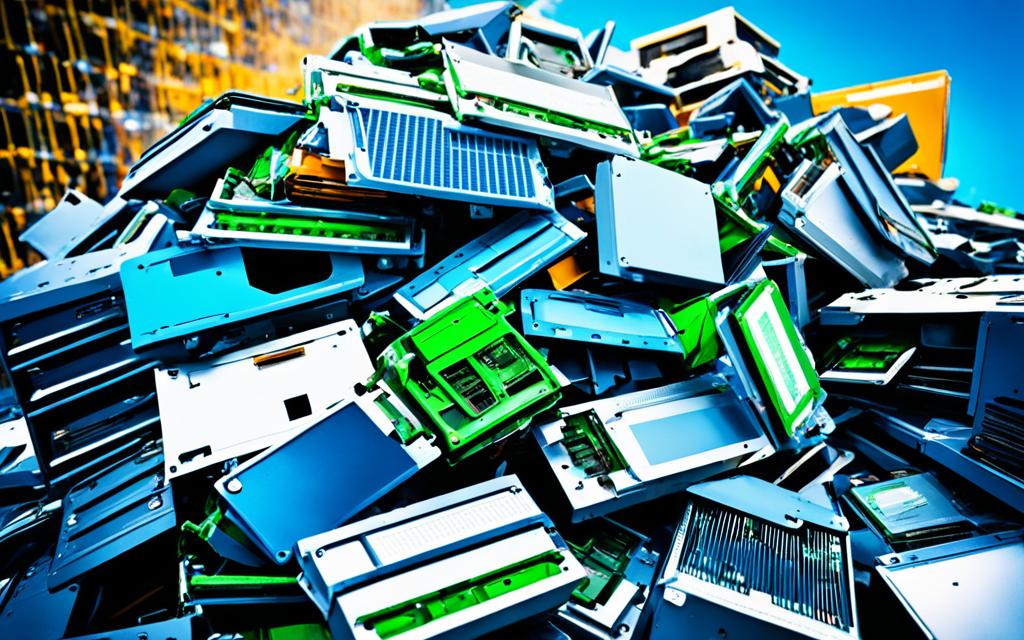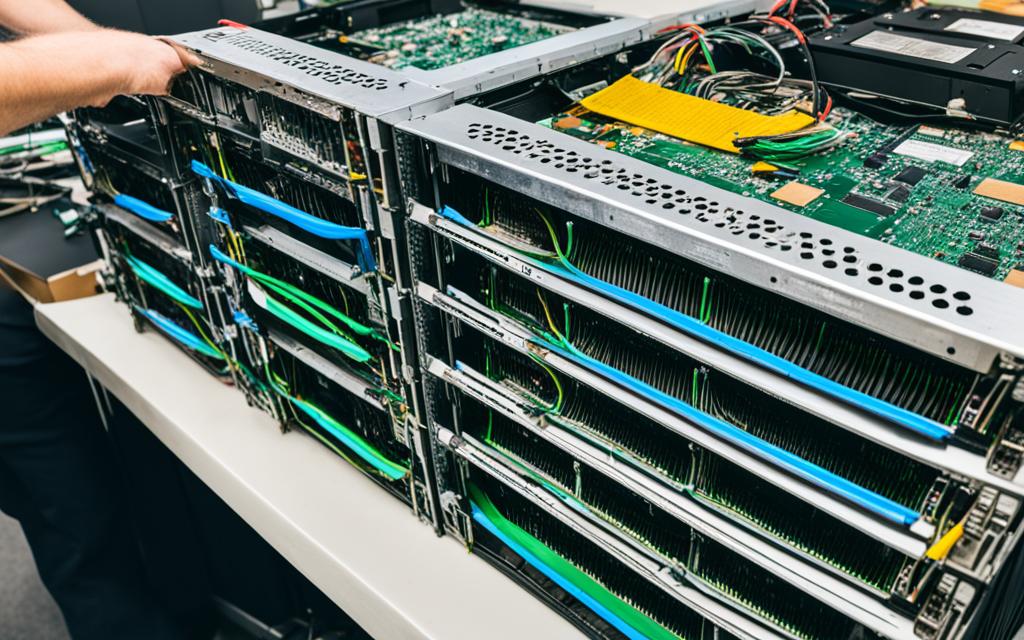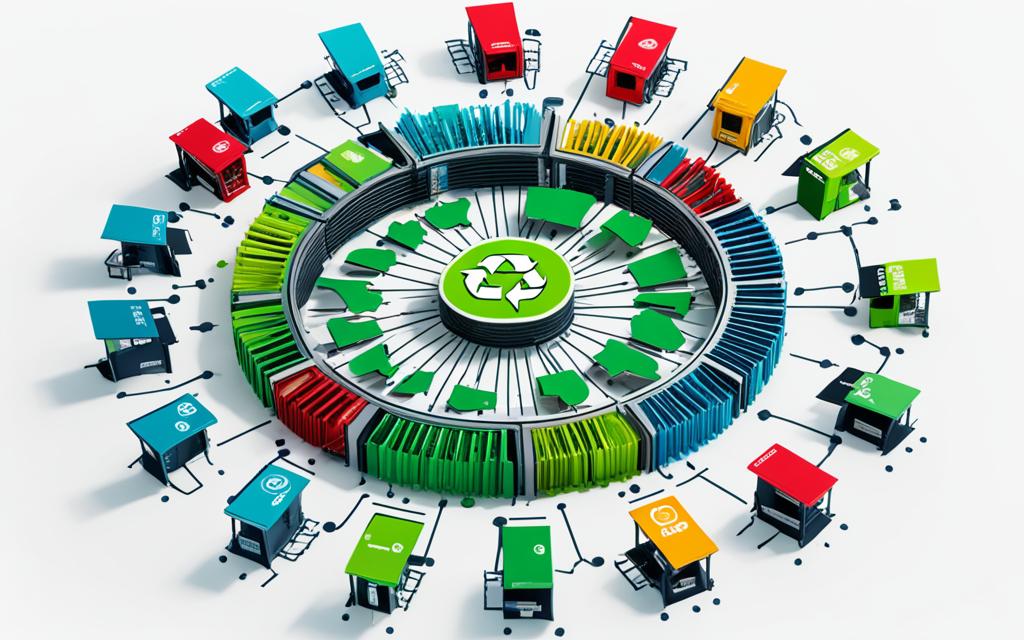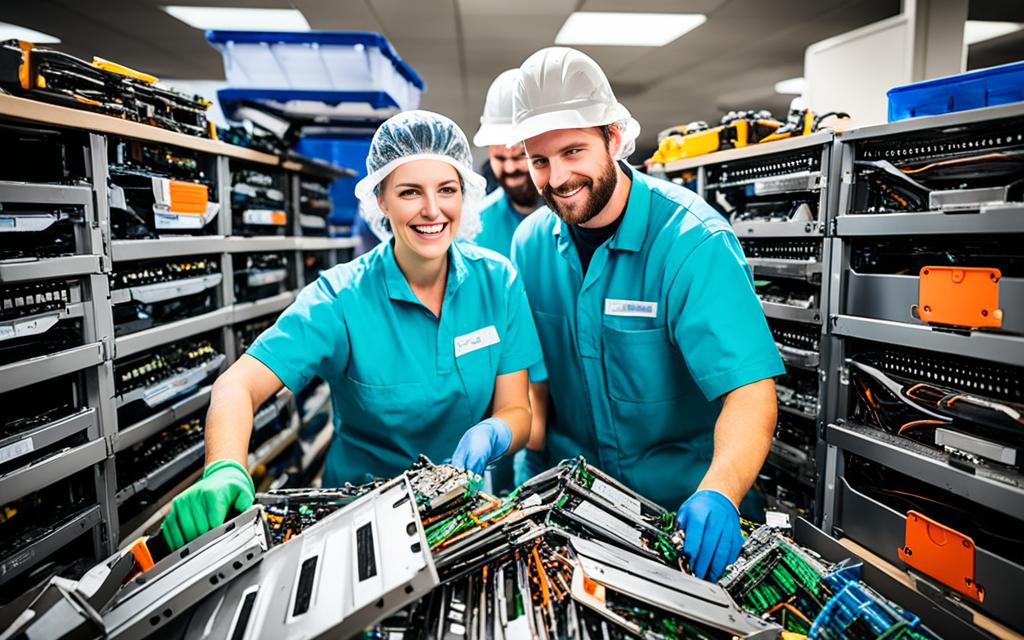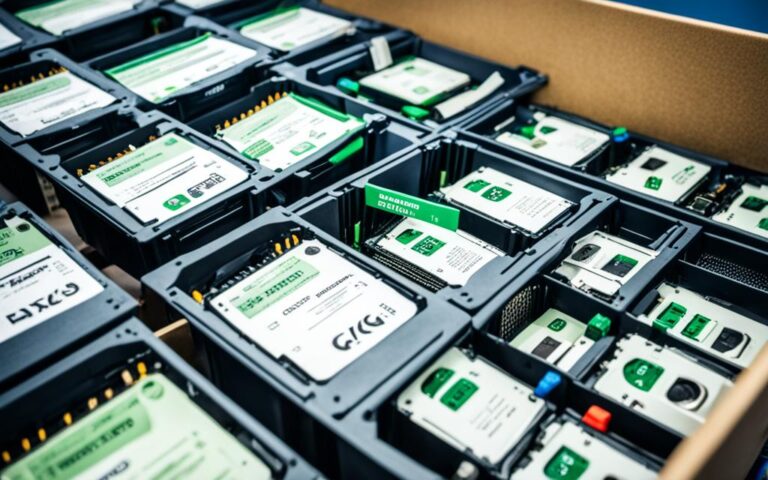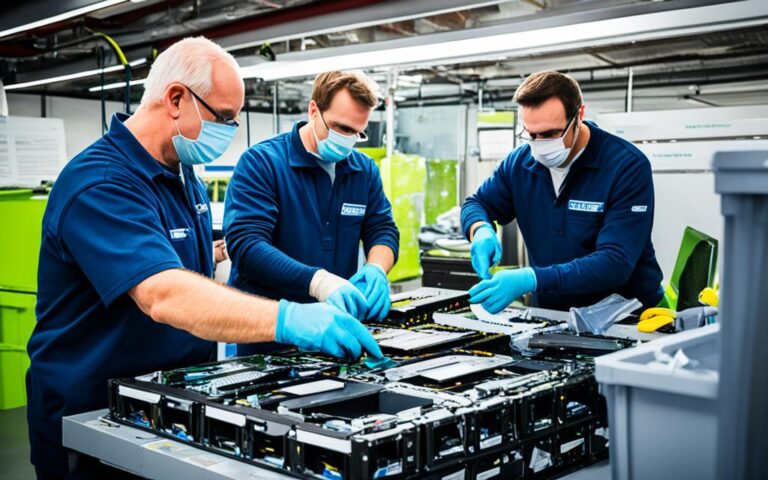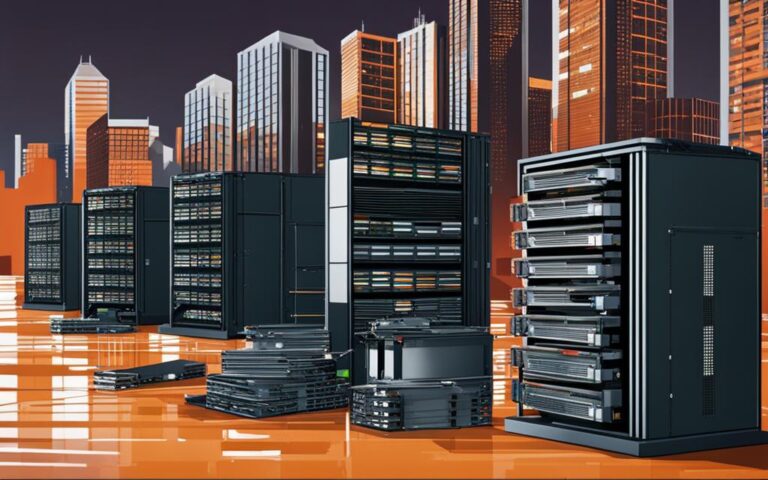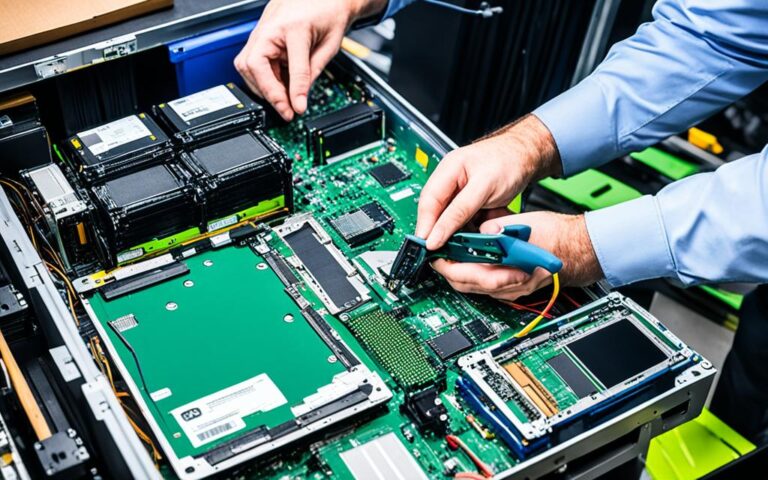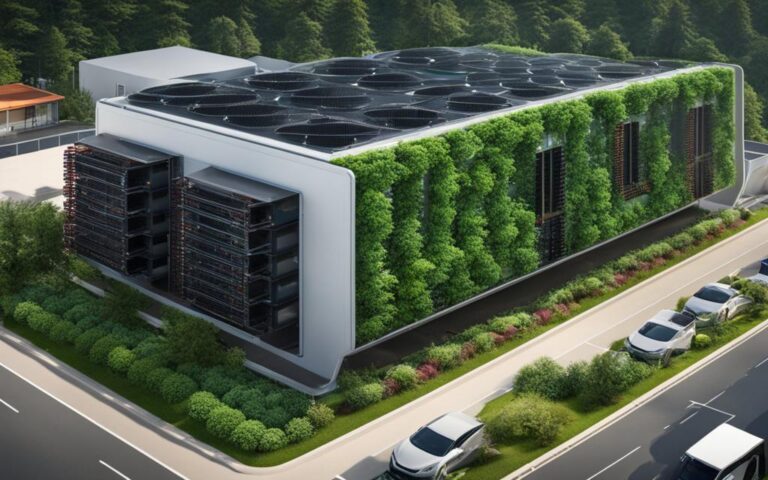How Server Recycling Can Contribute to Energy Efficiency in Data Centers
Server recycling is not just a responsible practice; it is a powerful tool that can drive energy efficiency and promote sustainability in the UK tech industry. As data centres continue to expand to meet the escalating demands of the digital age, their energy consumption has become a pressing concern for environmentalists and industry experts alike.
By adopting server recycling practices, data centres can significantly reduce their energy consumption and make a positive impact on the environment. This approach not only lowers the carbon footprint of data centres but also helps to optimize resource utilization, contribute to the circular economy, and promote a more sustainable future.
In this article, we will explore the various ways in which server recycling can enhance energy efficiency in data centres. We will delve into the environmental impact of data centres, the integration of renewable energy sources, energy efficiency measures, modular and scalable designs, waste reduction and recycling, as well as carbon offsetting and environmental certification.
Join us on this journey as we uncover the potential of server recycling and its role in creating a more sustainable and energy-efficient landscape for the UK tech industry. Together, we can make a difference.
The Environmental Impact of Data Centers
Data centers have become synonymous with high energy consumption and carbon emissions due to their power-hungry servers and continuous operation of cooling systems. With the exponential growth of data processing and storage, the environmental concerns surrounding data centers have heightened, necessitating the adoption of sustainable practices in the industry.
The rapid growth of data processing and storage has led to an increase in energy consumption and carbon emissions from data centers.
Data centers are notorious for their round-the-clock operation and dependence on energy-intensive infrastructure. The constant power demand of servers and cooling systems has resulted in significant energy consumption, contributing to carbon emissions and environmental concerns. As data centers play a pivotal role in supporting our increasingly digital world, addressing their environmental impact has become imperative.
The Need for Sustainable Practices
The rise in energy consumption and carbon emissions from data centers has sparked widespread environmental concerns. The continuous operation of servers and cooling systems significantly contributes to their carbon footprint, impacting global efforts towards sustainability. It is crucial for the industry to embrace sustainable practices and explore innovative solutions to mitigate the environmental impact of data centers.
In response to these concerns, data center operators are increasingly focusing on energy efficiency, renewable energy integration, and waste reduction. These initiatives aim to reduce carbon emissions, minimize energy consumption, and promote responsible environmental stewardship.
The Growing Importance of Energy Efficiency
Energy efficiency plays a vital role in mitigating the environmental impact of data centers. By optimizing the design and operation of servers, cooling systems, and facility management, data centers can significantly reduce their energy consumption and carbon emissions.
Advanced cooling technologies, such as liquid cooling and free cooling, offer energy-efficient alternatives to traditional air conditioning systems. By adopting these innovations, data centers can minimize their reliance on energy-intensive cooling methods, resulting in reduced carbon emissions and lower energy costs.
Renewable Energy Integration
The integration of renewable energy sources is a crucial step towards sustainable data center operations. Many data center operators are investing in solar, wind, and other renewable technologies to power their facilities. This shift towards clean energy not only reduces carbon emissions but also enhances the resilience and long-term sustainability of data centers.
Minimizing Waste through Recycling
Addressing the environmental impact of data centers goes beyond energy consumption and carbon emissions. Data centers generate a significant amount of electronic waste, including outdated servers and hardware components. Implementing comprehensive waste reduction and recycling programs is essential to minimize the carbon footprint of these facilities.
Data centers can promote responsible disposal practices, refurbish equipment, and collaborate with certified e-waste recyclers to ensure proper handling of electronic waste. By reducing the amount of waste sent to landfills, data centers contribute to a circular economy and minimize their environmental impact.
Carbon Emissions Comparison
| Data Centers | Transportation | Residential Buildings |
|---|---|---|
| High energy consumption and carbon emissions | Significant carbon emissions | Contributes to greenhouse gas emissions |
| 24/7 operation and power-hungry servers | Dependent on fossil fuels | Energy-intensive heating and cooling systems |
| Environmental concerns | Major contributor to air pollution | Contributes to overall energy consumption |
Comparative carbon emissions from different sectors highlight the significant impact of data centers on the environment. It is crucial to implement sustainable practices and prioritize energy efficiency to minimize the carbon footprint of data centers.
In the next section, we will explore how renewable energy integration can further enhance the sustainability of data centers and contribute to a greener future.
Renewable Energy Integration
One key strategy to enhance energy efficiency and sustainability in data centers is the integration of renewable energy sources. Many data center operators are investing in solar, wind, and other renewable technologies to power their facilities. By reducing reliance on traditional energy sources, data centers can decrease their carbon footprint and contribute to a greener energy landscape.
Renewable energy offers numerous benefits for data centers. Firstly, it is a clean and sustainable source of power, reducing the reliance on fossil fuels and helping combat climate change. Additionally, renewable energy is usually locally sourced, which increases the energy independence of data centers and reduces their vulnerability to fluctuations in energy prices and supply.
Integrating renewable energy into data centers involves installing solar panels, wind turbines, or other renewable systems on-site or purchasing renewable energy from external providers. Many data center operators are embracing this shift towards sustainability and exploring innovative ways to maximize the use of renewable energy.
Benefits of Renewable Energy Integration in Data Centers:
- Reduces carbon emissions and environmental impact
- Promotes energy independence and price stability
- Enhances brand reputation and attracts environmentally conscious customers
- Contributes to the overall goal of transitioning to a low-carbon economy
Renewable Energy Integration Challenges:
While the integration of renewable energy in data centers is a promising solution, it does come with its own set of challenges. One major challenge is the intermittent nature of renewable energy sources, such as solar and wind. Data centers require a constant and reliable power supply, which can be affected by fluctuations in weather conditions. To address this issue, data center operators often combine renewable energy with energy storage systems or enter into power purchase agreements with renewable energy providers.
Another challenge is the initial investment required for installing renewable energy infrastructure. However, the long-term benefits, including cost savings and environmental impact reduction, often outweigh the initial costs. To justify these investments, data center operators must carefully assess the potential savings in energy costs and the positive impact on their carbon footprint.
| Renewable Energy Integration | Benefits | Challenges |
|---|---|---|
| Reduces reliance on fossil fuels | – Reduces carbon emissions – Promotes sustainability |
– Intermittent energy supply – High initial investment |
| Increases energy independence | – Price stability – Decreased vulnerability to energy supply fluctuations |
– Weather-dependent energy generation – Integration with energy storage |
| Enhances brand reputation | – Attracts environmentally conscious customers – Demonstrates commitment to sustainability |
– Power purchase agreements – Financial justification |
“Integrating renewable energy sources in data centers is not only an environmentally responsible choice but also a strategic one. It allows data center operators to reduce their carbon footprint and achieve long-term cost savings, all while establishing themselves as leaders in sustainability.”
Data centers have the potential to play a significant role in the transition to a sustainable energy future. By embracing renewable energy integration, these facilities can contribute to the reduction of carbon emissions, decrease their environmental impact, and pave the way for a more sustainable and energy-efficient digital landscape.
Energy Efficiency Measures
Improving the energy efficiency of data centers requires the implementation of various measures, including innovative server design, advanced cooling technologies, and effective facility management practices. These initiatives not only contribute to reducing energy consumption but also play a significant role in minimizing the environmental impact of data center operations.
One of the key areas of focus is server design. By embracing advanced server designs that prioritize energy efficiency, data centers can significantly reduce power consumption. These designs incorporate energy-saving features such as low-power processors, efficient power supplies, and intelligent power management systems. Optimizing server design ensures that energy is used more efficiently, leading to substantial energy savings and lower operational costs.
Another crucial aspect of improving energy efficiency is the implementation of advanced cooling systems. Traditional cooling methods, such as air conditioning, consume large amounts of energy. However, alternatives like liquid cooling and free cooling offer more energy-efficient solutions. Liquid cooling involves circulating coolants directly to the servers, effectively dissipating heat and reducing the need for excessive air conditioning. Free cooling, on the other hand, utilizes external air or water sources to cool the data center, taking advantage of natural environmental conditions. By adopting these advanced cooling technologies, data centers can achieve significant energy savings while ensuring optimal temperature regulation.
Implementing innovative server design and advanced cooling technologies are crucial steps towards achieving higher energy efficiency in data centers. These initiatives, when combined with other measures, contribute to creating a more sustainable and environmentally-friendly computing landscape.
Efficient facility management practices also play a vital role in energy optimization. Regular monitoring and maintenance of data center equipment can help identify and address energy inefficiencies promptly. Implementing power management tools and adopting best practices in energy usage, such as virtualization and workload consolidation, further enhance overall energy efficiency. Facility managers must also ensure proper airflow management and temperature control within the data center environment to maximize energy savings and maintain optimal performance.
Overall, by implementing energy efficiency measures such as innovative server design, advanced cooling technologies, and effective facility management practices, data centers can significantly reduce energy consumption and minimize their environmental impact. These initiatives not only contribute to cost savings but also align with the industry’s commitment to sustainability and environmental responsibility.
Modular and Scalable Designs
Traditional data center construction often leads to inefficient resource utilization during periods of lower demand, resulting in unnecessary energy consumption and excessive infrastructure. To address these challenges, the industry is embracing modular and scalable designs that allow for flexible data center capacity based on real-time needs. These innovative design approaches optimize resource utilization and minimize the environmental impact associated with maintaining excess infrastructure.
Modular designs offer a flexible and adaptable solution for data centers. By breaking down the facility into modular units, each with its own purpose and functionality, data centers can easily scale up or down based on demand. This modular approach not only allows for seamless expansion but also enables efficient deployment of resources by eliminating the need to power and cool unnecessary areas during low-demand periods.
Advantages of Modular and Scalable Designs:
- Resource Utilization: Modular designs empower data centers to allocate resources precisely where and when they are needed, optimizing energy usage and reducing waste.
- Infrastructure Optimization: Scalable designs enable data centers to quickly and cost-effectively adapt to changing business requirements, avoiding unnecessary investments in infrastructure.
- Flexibility and Agility: Modular designs allow for easy expansion, contraction, or reconfiguration, providing data centers with the agility to respond to evolving market demands while minimizing downtime.
- Cost Savings: By tailoring resource allocation to match demand, modular and scalable designs help data centers reduce operational costs by avoiding overprovisioning and lower energy consumption.
Implementing modular and scalable designs in data centers is not only environmentally responsible but also financially beneficial. These designs empower businesses to optimize their resource utilization, reduce infrastructure costs, and enhance operational efficiency. Embracing modular and scalable designs is a significant step towards creating sustainable and future-proof data centers that can adapt to the ever-changing demands of the digital era.
Waste Reduction and Recycling
Data centers are significant generators of electronic waste, including outdated servers and hardware components. As the demand for data processing and storage continues to grow, it is crucial for data centers to implement comprehensive waste reduction and recycling programs to mitigate the environmental impact of e-waste. By adopting responsible disposal practices and refurbishing equipment, data centers can actively contribute to a circular economy and minimize their carbon footprint.
Implementing waste reduction and recycling initiatives in data centers not only diverts electronic waste from landfills but also promotes the reuse of valuable resources. By refurbishing and repurposing equipment, data centers can extend the lifespan of their hardware, reducing the need for constant replacements and conserving valuable raw materials.
Responsible disposal practices involve proper handling and recycling of electronic waste to prevent soil, water, and air pollution. Data centers can partner with certified e-waste management companies to ensure that their electronic waste is disposed of safely and efficiently. These companies can dismantle and recycle electronic components, recovering valuable metals and materials for reuse in the manufacturing industry.
Furthermore, data centers can actively contribute to waste reduction by implementing measures such as:
- Implementing server consolidation techniques to maximize the utilization of existing servers and reduce the number of servers in operation;
- Promoting virtualization and cloud computing to minimize hardware requirements;
- Optimizing equipment procurement to ensure longevity and recyclability;
- Establishing internal recycling programs to efficiently manage and dispose of electronic waste generated within the data center.
“By implementing comprehensive waste reduction and recycling programs, data centers can play a crucial role in minimizing the environmental impact of e-waste and promoting a greener future.”
By integrating waste reduction and recycling efforts into their operations, data centers can demonstrate their commitment to responsible environmental stewardship. This not only benefits the planet but also enhances their reputation as socially and environmentally responsible organizations within the UK tech industry.
Carbon Offsetting and Environmental Certification
Data center operators are taking proactive steps beyond infrastructure changes to address their environmental impact. Carbon offsetting initiatives have gained popularity as companies recognize the importance of reducing greenhouse gas emissions. By investing in projects that offset carbon emissions, data centers are making a significant contribution towards environmental sustainability and combating climate change.
“Carbon offsetting initiatives have gained popularity as companies recognize the importance of reducing greenhouse gas emissions.”
Additionally, data centers are pursuing environmental certifications to demonstrate their commitment to sustainability and environmental responsibility. One notable certification is LEED (Leadership in Energy and Environmental Design), which sets strict standards for energy efficiency, waste management, and sustainable practices.
Obtaining LEED certification requires data centers to meet stringent criteria, including efficient energy systems, water conservation measures, and responsible waste management protocols. By achieving this certification, data centers showcase their dedication to reducing their environmental impact and promoting a greener future.
The Benefits of Carbon Offsetting and Certification
The incorporation of carbon offsetting initiatives and environmental certifications provides several advantages for data centers:
- Environmental Stewardship: Carbon offsetting demonstrates a data center’s commitment to reducing its carbon footprint and protecting the environment.
- Enhanced Reputation: Environmental certifications like LEED enhance the reputation of data centers by showcasing their sustainable practices and commitment to environmental responsibility.
- Attracting Customers: Many customers prioritize sustainability when choosing data center partners. Carbon offsetting and environmental certifications can attract environmentally conscious clients.
- Industry Leadership: By adopting carbon offsetting initiatives and achieving environmentally-focused certifications, data centers can showcase their leadership in driving sustainability efforts within the industry.
The table below illustrates the comparison between carbon offsetting initiatives and environmental certifications:
| Carbon Offsetting | Environmental Certification (LEED) |
|---|---|
| Investment in projects that reduce greenhouse gas emissions | Demonstrates commitment to sustainable practices |
| Offsets carbon emissions generated by data center operations | Evaluates energy efficiency, waste management, and sustainable practices |
| Contributes to a greener future and combats climate change | Enhances the center’s reputation and attracts environmentally conscious clients |
Incorporating carbon offsetting initiatives and pursuing environmental certifications such as LEED reinforces data centers’ sustainability commitment. By actively working towards reducing their carbon footprint, operators contribute to a more sustainable and eco-friendly computing landscape.
Conclusion
As data centres continue to play a crucial role in our digital-driven world, sustainability and energy efficiency are paramount. By adopting server recycling practices, integrating renewable energy sources, improving energy efficiency measures, embracing modular and scalable designs, promoting waste reduction and recycling, and obtaining environmental certifications, data centre operators can contribute to a more sustainable and eco-friendly computing landscape.
Server recycling holds significant potential for reducing energy consumption and promoting a greener future in the UK tech industry. By responsibly disposing of outdated servers and refurbishing equipment, data centres can minimise their carbon footprint and contribute to a circular economy.
Furthermore, integrating renewable energy sources such as solar and wind power allows data centres to decrease their reliance on traditional energy sources, thereby reducing their carbon footprint and contributing to a greener energy landscape. Advanced cooling technologies, efficient facility management, and modular designs also play a vital role in enhancing energy efficiency and resource utilisation.
Data centre operators who also obtain environmental certifications like LEED demonstrate their commitment to sustainability and adherence to strict environmental standards. Through these comprehensive measures, data centres can pave the way towards a more sustainable and energy-efficient future.
FAQ
How does server recycling contribute to energy efficiency in data centers?
Server recycling plays a crucial role in improving energy efficiency in data centers. By recycling outdated servers and hardware components, data centers can reduce energy consumption and promote sustainability in the UK tech industry.
What is the environmental impact of data centers?
Data centers are known for their high energy consumption, which contributes to carbon emissions and environmental concerns. The rapid growth of data processing and storage has raised concerns about the industry’s carbon footprint and the need for sustainable practices.
How can renewable energy be integrated into data centers?
Data center operators can integrate renewable energy sources such as solar and wind power to reduce reliance on traditional energy sources. This helps decrease the carbon footprint of data centers and contributes to a greener energy landscape.
What are some energy efficiency measures in data centers?
Data centers can improve energy efficiency by implementing measures such as server design, advanced cooling technologies, and efficient facility management. Innovations in server design and cooling systems can significantly reduce energy consumption.
What are modular and scalable designs in data centers?
Modular and scalable designs allow for the expansion or contraction of data center capacity based on current needs, optimizing resource usage and minimizing the environmental impact associated with excessive infrastructure.
How can waste reduction and recycling be promoted in data centers?
Data centers can mitigate the environmental impact of electronic waste by implementing comprehensive waste reduction and recycling programs. Responsible disposal practices and equipment refurbishment can minimize the carbon footprint and contribute to a circular economy.
What are carbon offsetting and environmental certifications in data centers?
Carbon offsetting initiatives, where companies invest in projects that reduce greenhouse gas emissions, and obtaining environmental certifications like LEED demonstrate a commitment to sustainability and adherence to strict environmental standards.
How can data centers contribute to sustainability and energy efficiency?
By adopting server recycling practices, integrating renewable energy sources, implementing energy efficiency measures, embracing modular and scalable designs, promoting waste reduction and recycling, and obtaining environmental certifications, data center operators can contribute to a more sustainable and eco-friendly computing landscape.

